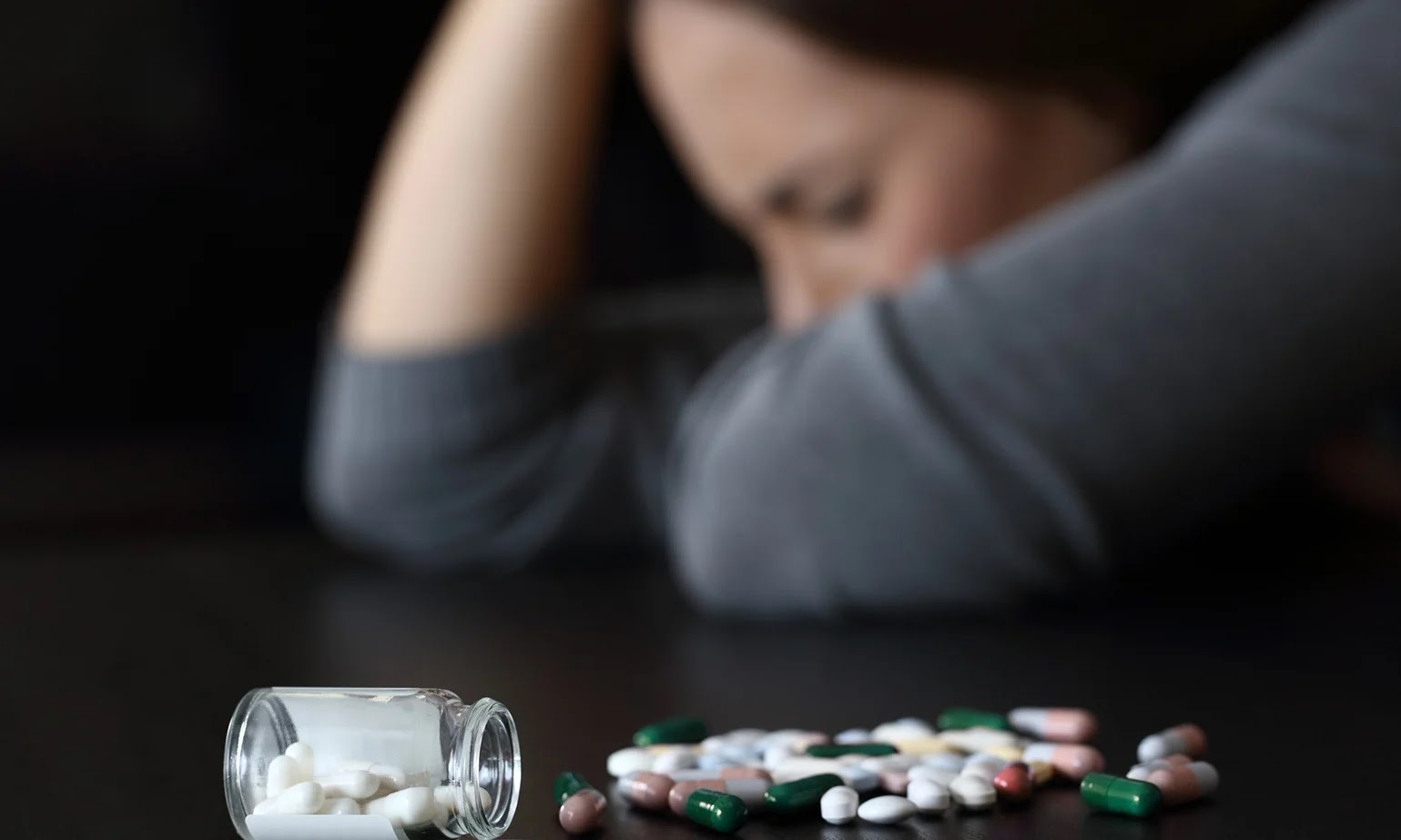
People who came to government and private OOAT centres to get rid of addiction problem, ended up getting hooked on the very drug prescribed to wean them off habit-forming opium, poppy husk or heroin. A report by Aayush Goel
“Me and my husband met in school. He was into heroin then and got me also hooked. Our parents got to know of our affair and addiction in 2017 and we were married off after being taken to the newly launched OOAT (outpatient opioid assisted treatment) clinic in Kapurthala. We were given our magic pill then and ever since we both have been on BPN 4 mg and it’s part of our weekly grocery list you can say. We no longer go to the clinic but get it from a nearby private centre and get our high. They had said it will stop soon but it didn’t and now it doesn’t matter as we know this will not kill us and we still get our high without our family even knowing about it,” says Japneet Kaur (name changed) a 27-year old housewife from village Chola Sahib, Taran Taran district.
Kaur and her husband Sukhjinder (name changed) are not lone cases but part of around 1 lakh strong brigade of alternate or prescription addicts.

“I have been on pills since 2015 and take them with my diabetes medicine. They at the clinic say I have to take it life long, it will keep me alive and without withdrawals. I sometimes mix it with alcohol and it gives the same high but cheap. People say I am off drugs but I know I am still an addict and you know I want to die sober,” adds 58 years old Teg Singh (name changed) of Mansa.
These are people who went to government or private centres to leave addiction but all thanks to lack of expertise, enforcement, tapering guidelines, staff and psychiatrist crunch, unchecked sale at mushrooming private centres went on get hooked on the very drug that was being used to wean them off habit-forming opium, poppy husk or heroin. The people who have reported this addiction constitute around 17 percent of total registered addicts every year but the number may be way higher owing to the fact that many are not even accepting the same.
OOAT Plan
The drug that was meant only for government-run centres hit an all-time high in 2017 with Congress government’s ambitious OOAT plan.
Aimed to change the lives of over 7 lakh addicts, the government opened over 200 OOAT centres. A combination of Buprenorphine-Naloxone was introduced for treating addicts by giving them take-home doses, a common practice followed across the world. Around 204 privately owned de addiction centres too came up which were allowed to dispense the tablet.
While mixing it with Naloxone was a good idea to keep any overdose or high effects at bay but four years down the line the plan is still headed downhill as the drug meant to de-addict went on to become an alternate and cheap addiction and even found its way to the open market. Today it’s not just the addicts who have added BPN (buprenorphine) to their list of addictions but even the newbies on board are skipping conventional drugs and going right away for these pills mixed with alcohol available at a cheaper rate with promise of no death by overdose.
Addiction: Not curable but manageable: STF psychiatrist
“You never go to a doctor and say how many diabetics are cured but ask how many are managed? Same is the case with addiction. There are two major approaches to wean away opioid dependent persons. One is the abstinence approach and other alternate medication approaches. There are more chances of relapse in an abstinence based approach as compared to alternate medication for de-addiction which is more effective. These medicines take them off illicit drugs, heap to wean off the idea of high or enjoyment through those drugs. They are better scientifically for management and rehabilitation,” says Dr Rana Ranbir Singh, consultant psychiatrist and technical advisor to Punjab’s anti-drug Special Task Force. He adds a minimum of 18 months to 24 months of treatment is required to get the best results.
Recognising the Crisis
The state probably woke up to crisis in 2019 when it conducted a survey and reported about 67,000 addicts seeking treatment reported that they were addicted to buprenorphine. Besides, the report observed that buprenorphine must be given under the supervision of a psychiatrist and also report misuse of the tablet.
The private centres have been recklessly dispensing the medicine even to patients addicted to alcohol and low potency opioids such as poppy husk. The high profit margins make it vulnerable to misuse. The health department in 2019 detected diversion of 5 crore tablets of Buprenorphine worth Rs 200 crore by private centres. The matter drew the attention of the Enforcement Directorate (ED) too. But before it could do anything the Covid crisis stuck and this was forgotten in this pandemic and then government transition.
Buprenorphine: Double Edged Sword
Buprenorphine (BPN), the drug has long been part of the state government’s then oral substitution therapy (OST) and now revamped outpatient opioid assisted treatment (OOAT). Buprenorphine is an opioid agonist and its effects mimic that of opium. In medical science, it has been termed as a “high addiction potential” drug. The medicine is highly potent and available in strengths of 0.4mg and 2mg tablets and is effective in suppressing withdrawal symptoms after discontinuation of opioid use, especially heroin. While framing treatment guidelines, experts of Postgraduate Institute of Medical Education and Research (PGI), Chandigarh, had termed it as a “double-edged sword”. If used properly, such medicines can “save and rebuild lives”. If not, they can have a negative impact, like any other opiate.
Poor Retention on Treatment
Although oral opioid agonist therapies (OATs) like buprenorphine are effective first-line treatments, OOAT remains largely underutilized due to low retention rates.
As per the records of Health Department, 2 lakh 45 thousand 595 people registered for treatment at OOAT Clinics from October 2017 to 31st may 2022. Out of these only 43,104 were retained on the treatment for more than 30 days. Similarly in private clinics for same period 5,48,741 patients were registered and only 12,824 were retained for more than 30 days. As per researches across the globe in settings where buprenorphine is widely available, many eligible persons with Opioid Use Disorder (OUD) are unable to access care, decline treatment with these medications if OOAT is started—are often not retained in care beyond 12 months which defeats the purpose and often pushed into relapse or addiction of OOAT.
Lack of Psychiatrists
While the BPN prescription tapering and plan demands supervision of a Psychiatrist, crunch of the same in Punjab is the first challenge that fails the program. Due to shortage of psychiatrists, the government deployed MBBS doctors in OOAT clinics, were given five days training and their role largely remained to dispense Buprenorphine to patients. The doctors, according to experts, are not qualified to diagnose mental health symptoms of a substance-use disorder patient which are key in medicine abuse and relapse. These clinics are also short of counsellors.
“Psychiatrist is vital to administering any de-addiction treatment. The patient has complex mental state or issues which may be either be cause or symptom of addiction, analysing the same and working out dosage according to it is very important,” says psychiatrist and Deputy Medical Commissioner, health dept, Govt of Punjab Dr Sandeep Bhola
The Quality of Buprenorphine
As the OOAT continues to be the only workable option for the state, the AAP government wants to ensure the best quality of medicine. In a first in the last many years, the state health department went on to get the samples of medicine (provided by two firms), which are given to addicts at the de-addiction centres tested this month. Both have failed the quality test. According to department officials the amount of salt has been found to be more than the prescribed limit in the tablets of psychotropic drug which is a combination of buprenorphine and naloxone salts. These batches belong to 2019 and 2020. Earlier, the same companies were awarded contracts for supplying the de-addiction medicine, despite being under suspicion of fleecing the government by raising the price through “price pooling”.
The Economics of Buprenorphine
The government procures around eight crore buprenorphine tablets every year for OOAT clinics and de-addiction centres. Procured between 4 to 6 rupees by the government this medicine is given free at government clinics. In private clinics the number according to department sources is around 18 crores tablets. These tablets are sold at around Rs 38 per tablet. The same tablet is available at Rs 70 in grey market. The Punjab government in 2019 made a failed attempt to control the price of Buprenorphine by fixing the price of one tablet at Rs 7.5. The government had also subsequently written to the National Pharmaceutical Pricing Authority (NPPA) for regulating the price of Buprenorphine-Naloxone under the Essential Commodities Act. The government later took a U-turn by doing away with the price capping.
Data show decline
The data of the National Crime Records Bureau (NCRB) showed that the deaths caused by drug overdose in Punjab dropped by more than two times from 2017 to 2020. As many as 71 persons had died of drug abuse in 2017 while in 2018 the number came down to 55. Drug overdose claimed 45 lives in 2019 and 34 in 2020.
Policy to rein in private de-addiction centres, occupancy down by 30 percent in last 3 years
In its fight against drugs, the Punjab government has been adopting standard operating procedures for checking private de addiction centres like selling OOATS medicine over the counter without proper requisite etc. and has also been trying to regulate mushrooming in the state by imposing restrictions on the issuance of new licence. However despite all efforts, majority of de-addiction centres have transformed into an OOAT dispensing counter. No occupancy mandation for validity of license has made majority to shun rehabilitation plans and just hand out medicine and make profits. Interestingly many of these clinics are being run by the firms providing OOAT medicine to the government which is against propriety. Faced by a resource crunch, the government encouraged private de-addiction centres, which have mushroomed in recent years, establishing their monopoly. Due to poor enforcement, many private centres started to recklessly dispense the medicine against norms. There are reports of the medicine being prescribed in routine for low-potency opioids like poppy husk, low-quality opium, codeine cough syrups and propoxyphene capsules.
Recovery or Harm Reduction : The Big Question
Today in 2022 the new AAP government faces the challenge of ‘deep rooted’ addiction in the state with legacy addict count of over 7 lakhs and around 4000 rehabilitation beds but majority are underutilised. It is a wonder drug which has achieved results in terms of low mortality but the addiction is constantly rising. It however has hardly any expert means or action plan to work with BPN which PGIMER in its report had called a ‘doubled edged sword’. At present, the state has around 500 infrastructure crunched OOAT clinics. Like its predecessors it is yet to define the line of treatment and choose between current ‘harm reduction’ and rehabilitation. Unlike the western countries, the state still does not have a timeline for termination tapering of dose for OOAT medicine which should be a key goal of any line of treatment. Published literature by psychiatrists across the world and India emphasises that OST / OOAT should be “recovery oriented” rather than ‘time unlimited’. They conclude that especially for natural and pharmaceutical opioids and for all age groups, optimum dose and duration of OST, and mode of treatment delivery including the frequency of dispensing cannot be generalised. Additionally in Punjab, time-unlimited OST or OOAT would impose a huge burden on already limited health-care resources.













